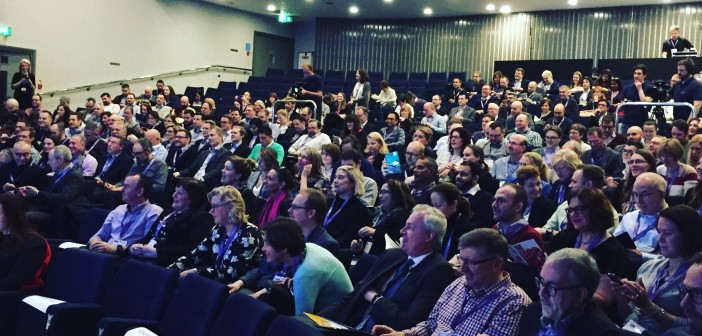The Learning Technologies Conference is a paradox. This year’s keynote speaker, Rohit Talwar, kicked off the conference by talking about how artificial intelligence is and will be dramatically changing how we work. This technology represents new ways of doing things and is a big, disruptive leap forward for organisations.
Following that session I walked into a case study session in which three L&D managers shared how elearning had helped them ‘transform’ their face to face training.
My view of the conference is skewed by the sessions I chose to attend, but those sessions told me this: that most organisations use technology for learning that lags way behind what technology can now offer.
This year the conference was not the place to go to be educated about how new technologies are being used in learning. It was the place go to get a sense of what the future looks like – without examples of corporate learning use cases – and how organisations are currently using learning technologies, which mostly lags behind what technologies can now achieve.
There was a real discrepancy between what was on offer upstairs and what was on offer downstairs – the conference is on level three at London’s Olympia, the exhibition on level one. For example, why was there no mention of xAPI in the conference when there was a session on evaluation upstairs? You had to go downstairs to the exhibition hall to learn about how vendors and organisations are using that piece of technology.
In one talk upstairs, there was mention of using gig workers to help deliver alternative learning solutions. Downstairs, you could see a gig platform for digital learning. Other technologies such as artificial intelligence and virtual reality were also on show downstairs.
This year, the conference provided tips on getting better at the fundamentals – designing for the user, looking at the role of culture, how to do better video, how to be a better learner and so on.
In showcasing the newest applications, the exhibition this year provided a necessary educational experience. Talwar told me after his speech that one of the roles of L&D is to understand what technologies are capable of and how they could make the most of them. “To me, digital literacy is now about understanding the technologies and the science that’s shaping our future. You don’t have to understand the details of how an AI algorithm works, but you need to understand what it’s capable of. And you need to understand how it changes our world when we can process that much data at that kind of speed. It changes the whole way we think, the way we do things. It enabled things that we would never have been able to do in the past with just human labour.”
The problem with the exhibition is that it is not set up to be an educational experience – it is set up for selling. And herein lies the challenge: L&D needs better insights into the technologies on offer. That’s a challenge for conference organisers and it’s also a challenge for vendors because this is not about selling. This is about learning and understanding what technology fits with your organisation.




